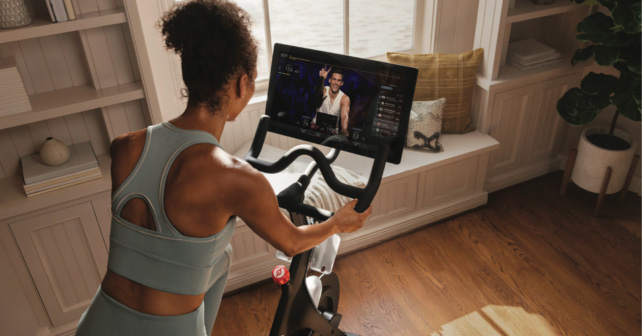Customers are now more interested in opportunities for personalization and self-expression than established luxury brands that project an inaccessible image. What does that mean for the future of these traditional brand behemoths?
Speaking with Carla, a young lawyer living in Los Angeles, reveals a great deal about what she and other consumers now seek from their purchases. “What I love about this jewellery is that it can mean different things to different people,” she said. “To me it’s a trip to Sao Paulo after a painful divorce. But to you it might just be a talisman.”
ReD recently conducted a series of strategy projects for global consumer goods companies in the luxury, jewellery and menswear sectors. We studied people from multiple demographic groups and markets, with a focus on the role of objects and brands in the process of identity construction. An emerging pattern became clear: there has been a pattern shift in the way people are seeking to express themselves. Fewer consumers are deriving self-expression from external references and institutions. And more of them are self-defining. This change has a consequence for consumer goods brands. In a world that places entrepreneurialism and creativity on a pedestal, ‘lifestyle’ brands that promote symbolic and prescriptive imagery are under pressure.
What consumers seek are tools for constructing their own individual outlook within a variety of lifestyles. This points to a new paradigm of branding: ‘platform’ brands. We came across two modes in which platform brands project this deliberate ‘ambiguity’ – first, by providing a blank canvas on to which consumers can project highly personal aspirations; and second, by suggesting an attitude across contexts.
Lifestyle brands under pressure
Following a severe wave of discounting by consumer goods companies in the 1980s, companies started looking for less destructive ways to increase sales – giving birth to the idea of ‘brand equity’. Originally, this equity represented a proxy of quality. Think of the Michelin Man insuring your car tyres, or Fairy Liquid keeping your hands softer than soft. Shortly after, brand differentiation evolved at the hands of a new class of corporations that saw themselves as ‘meaning brokers’ instead of product manufacturers.
Commodities soon took the back seat to the real product – the brand – sold as a concept, experience and lifestyle. As Diesel’s Renzo Rosso stated in Paper magazine: “We don’t sell a product, we sell a style of life. I think we have created a movement… The Diesel concept is everything. It’s the way to live, it’s the way to wear, it’s the way to do something.”
Significantly, the rise of the lifestyle movement took place in the context – and, some would argue, as a consequence – of a decline of broader political and religious narratives that formerly provided direction to people’s lives.
Lifestyle brands create total universes with an ideology and style that dictate rules for a way of life – convincing people that brand adoption will strengthen their personal codes of conduct, culture and social distinctiveness. Ralph Lauren inscribed its products in a singular world of “aristocrats, Ivy Leaguers and adventurers who ride horses on ranches, take safaris in Kenya, or yacht in Newport”. This model prompted companies to invest massive resources in building a universe of signifiers – with a mix of iconic and unreachable products whose sole purpose was to build brand imagery. More affordable products drove the sales. Soon enough, consumers came to define themselves through the ‘uniform’ of the brand, and terms like ‘brand evangelist’ evoked the hope invested in brands to unlock new forms of faith, identity and tribalism.
In the last two decades – and despite an annual global brand advertising spend of $493 billion a year – consumer loyalty to lifestyle brands has become increasingly fragile, raising questions about the effectiveness of traditional direct marketing campaigns advertising ‘lifestyles’. What is more, brands like Tesla and WhatsApp have proven that spectacular success can be achieved without spending even a dollar on advertising. Such companies simply deliver high-quality products and services – with WhatsApp chief executive Jam Koum famously claiming: “Remember, when advertising is involved you, the user, are the product.”
Why brands fall from grace
Branding is ubiquitous and overextended
Today, the average Western consumer is exposed to more than 3,000 messages a day. There’s a plethora of branding tools and techniques to promote everything from laundry detergents to political candidates. Companies selling products that have low significance flood the marketplace with images and slogans depicting ways to lead a good life. A case in point: Johnson & Johnson’s recent Listerine ‘Bring Out the Bold’ campaign – which connects mouthwash to values of boldness and risk-taking – shows the absurdity of systematically linking consumer goods to identity claims. This has led to increasing consumer cynicism: why should businesses seek to provide meaning beyond the benefit and value of their products?
Lifestyle brands are prescriptive, hindering new forms of self-expression
The lives of most consumers ReD studied were characterized by fundamental uncertainty. Career tracks, interpersonal relationships and one’s place in the home were constantly negotiated.
We witnessed a resulting strong desire to broadcast ‘who I am’ in ways that are fluid, creative and autonomous. From the investment manager in London who was also an Ironman champion, to the 45-year-old Muscovite who discovered a passion for punk music once her children left the house, our respondents demonstrated a desire for hybridity and emancipation from preordained roles and expectations.
Many ubiquitous lifestyle brands and logos have become synonymous with the mass market, associated to specific castes and ideologies – especially in Western territories. If once wearing a full Dolce & Gabbana outfit signalled ‘taste and distinction’, many consumers today increasingly turn away from what they see as a vulgar and one-dimensional display of status, conformism and lack of creativity. Those that continue to place the brand front and centre are paying the price.
“They [consumers] no longer want to be a walking billboard of a brand,” says Michael Scheiner, a spokesman for Abercrombie & Fitch, which has recently reduced the size of its logo on its clothing, while increasing choice and variety to its ladieswear. “Individualism is important to them – having their own sense of style.”
Lifestyle brands beware
The traditional lifestyle-branding model is accessible to a select few with the legacy and resources to invest in building and sustaining an iconic image. When products fail, these brands are perceived to have the buffer of consumers’ loyalty.
Platform brands represent a challenge to the lifestyle model. They rely on products ‘speaking for themselves’ – beyond the slogans of direct advertising – empowering people to develop their own emotional attachments to a brand or product. Platform brands design for openness and semiotic ambiguity in two key ways…
1. The blank canvas: Becoming a vessel for highly personal aspirations
ReD recently designed the brand DNA of a highly successful global jewellery brand. Historically, the company refrained from choosing bold faces and exclusive identity slogans to advertise its offering, opting for a more democratic approach.
A global survey demonstrated that this had become its core strength as it enabled a very wide range of women to invest personal meaning in their jewellery products, using the brand as a tool to project highly intimate memories and aspirations – making it feel truly their own.
We recommended a set of design, retail and marketing principles to formalize the openness and evocativeness of the product and the brand across categories, consolidating its position as a building block for dreams – not the dream itself.
2. Attitude brands: Becoming a prop in the construction of a personal outlook
The rise of ‘humble’ brands refocusing aspirations around ‘real-life’ lifestyles and an exploration of individuality defy the ‘brand as uniform’ model. These brands take a background role – acting as a platform that strategically brings out key attitudinal characteristics of the wearer – for example, creativity, audacity or sense of taste. They refrain from creating a totalizing world by prescribing a panoply of products, complete outfits or sets of values, and instead represent an essential ingredient in a world. Acne Studios is perceived by followers as a company that has managed to remain ‘elusive yet ubiquitous’ – making principled design decisions through denim products without advocating a way of life. Acne has a strong sense of its identity as a company, but has mastered the art of representing an attitude or mood without laying it out peremptorily. As Acne brand managing director Mikael Schiller says: “We had this idea: not to explain everything to everybody.”
Platform brands derive power from encouraging hybridity
The growth of brands, digital offerings and retail spaces that encourage consumers to combine, curate, mix and match contrasting products and trademarks shows early signs that this may be a high-value experience in the future.
Platform brands enable this in their products – through design principles that invite juxtaposition. Muji’s philosophy is to ‘brand the unbranded’ by providing a minimalist experience of quality and products that are meant to be paired with furniture and lifestyle goods. The value of the product is not standalone, but increases with the time and agency invested in linking it to other contexts.
In retail, a similar phenomenon takes place with the rise of mixed digital and physical
spaces providing curated cross-brand, cross-price offerings characterized by surprising product combinations.
Manhattan boutique Story pioneers the concept of magazine-like ‘ephemeral retail’ anchored in storytelling. Instagram shopping tool liketoknow.it or Stitch Fix feature an edited product mix that allows audiences to navigate the explosion of options at their disposal – empowering consumers to make their own creative leaps.
The rise of the hybrid
People transition to increasingly hybrid identities, with lifestyle choices that simply didn’t exist in the recent past. The growing appeal of platform brands suggests an opportunity in the consumer goods market to design for creativity and experimentation – by investing resources more heavily in products and services that enable people to build a perspective, as opposed to dictating it to them.
— Christian Madsbjerg is partner at ReD Associates. Sandra Cariglio is manager at ReD Associates.
An adapted version of this article appeared on the Dialogue Review website.



